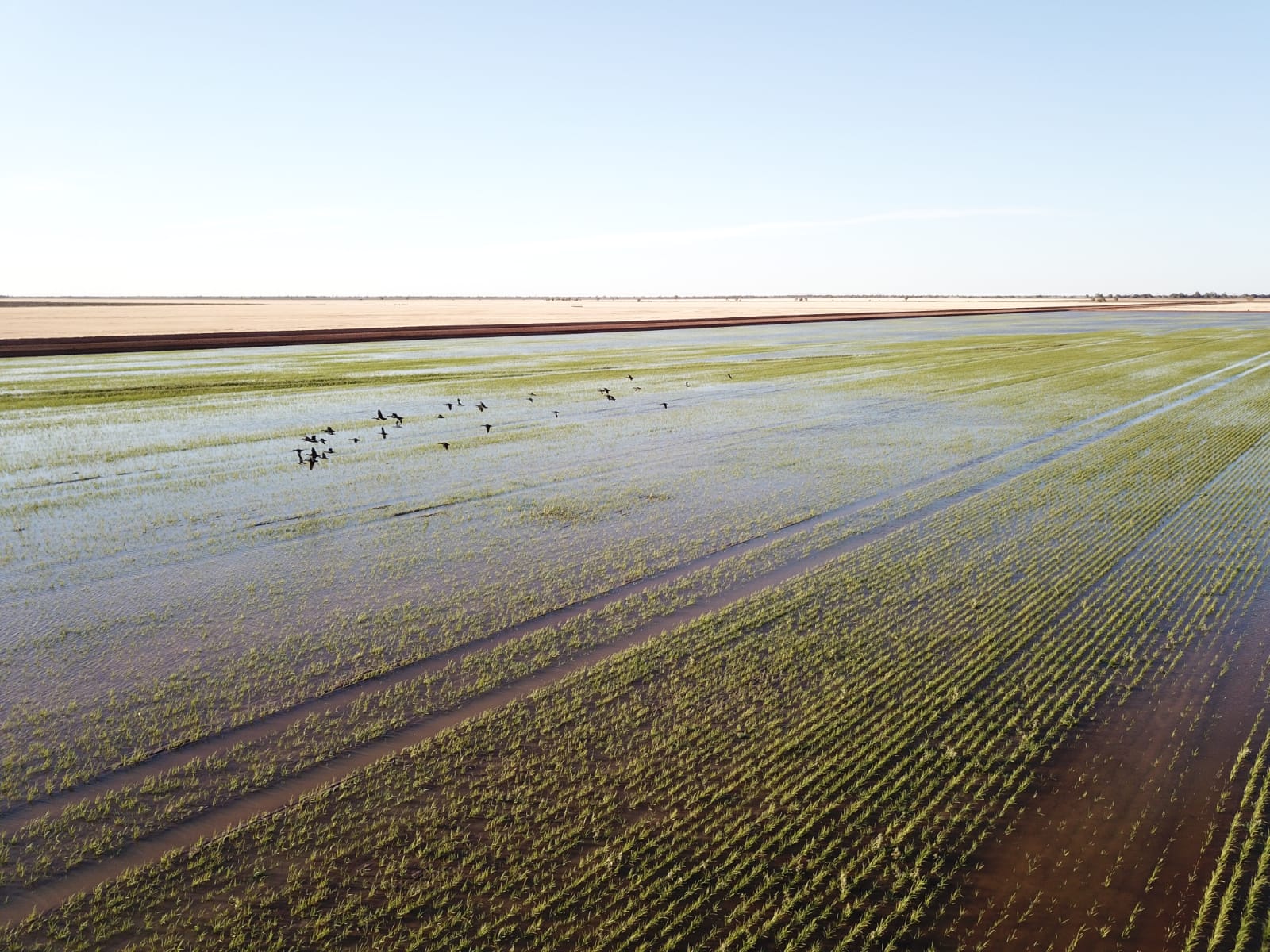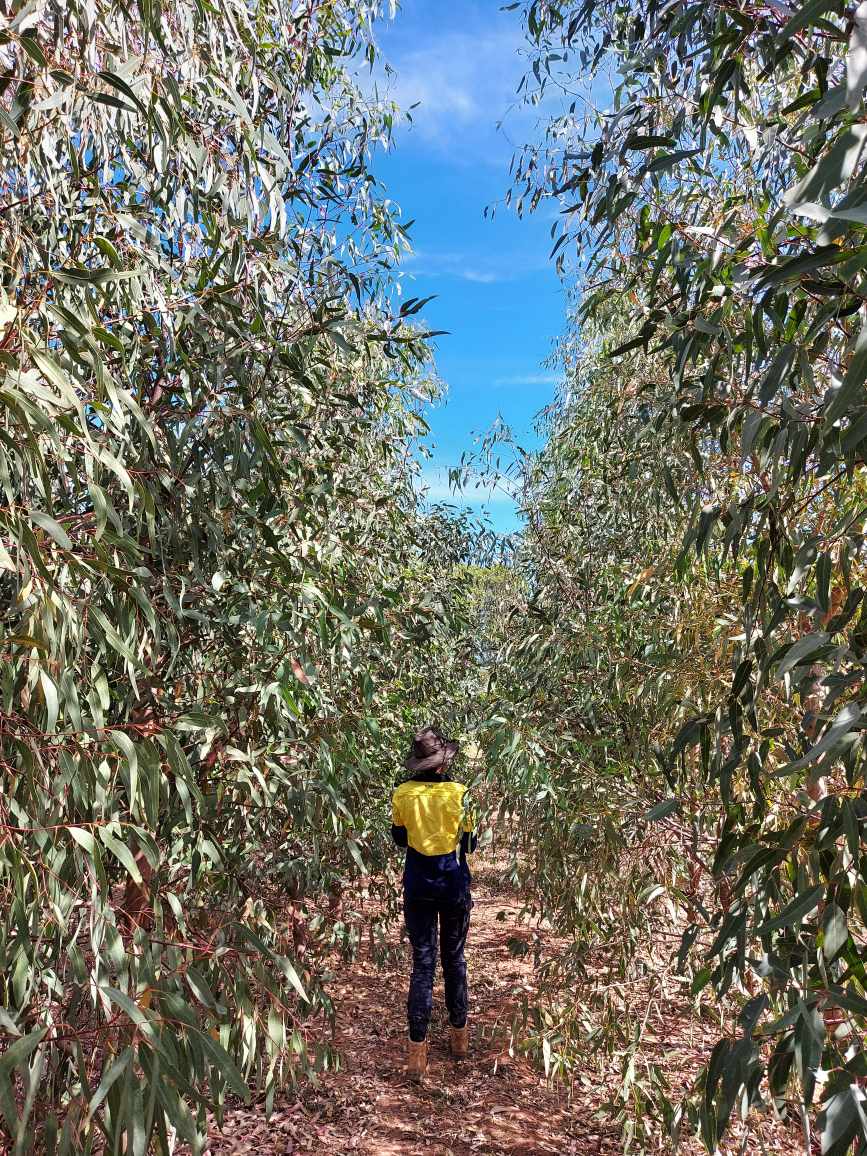Export demand and subsequently export prices remained firm, however they have come off from peak levels set during the height of the drought as domestic and export supply continues to improve. Globally, rice demand remains strong. Global consumption outstripped supply, and the severe drought in a key competitor growing region of California, both helped to support medium and short grain rice prices in the export market. The range of positive drivers on the domestic rice production has resulted in an estimated value of $288 million in 2021-22. 64
- GVP $288 million est. Up 68% year-on-year.
- Maximum water allocations aided 688 thousand tonne rice production est.
- Export demand was strong, with global rice stocks declining 2% yoy.
Production
Rice Production & Southern Water Allocations 201 64 31 j
- Rice Production
- Murrumbidgee-Murray GS Water Allocations (RHS)
Subsequently rice plantings increased by approximately 53% year on year to 67,000 hectares. Overnight temperatures during microspore were not as problematic as in the 2020-21 rice crop, with yields estimated to be higher at 10.3 tonnes/ha, and just shy of the prior record set in 2017-18 of approximately 11 tonnes per hectare. The Northern Rivers production region suffered some rice crop losses due to the extreme flooding event in February and March 2022, however the relative impacts were estimated to be lower than some other broadacre crops due to the rice plants better tolerance of waterlogged conditions. 63 Overall rice production was estimated at 688 thousand tonnes, the majority of this being grown in the Riverina-Murray regions and the remainder in the Northern Rivers. 201 64
Price and Macroeconomic Conditions
Supporting farm gate prices is strong export demand, with average export prices remaining approximately 14% higher than the 10 year average levels, despite export prices declining by roughly the same amount year on year. 35 Part of the increased export price is attributable to sharply rising shipping costs which were estimated to have increased by approximately $50/tonne, while larger volumes allowed exports to return to previously under-serviced premium markets such as the Middle East and New Zealand. 55
Global rice consumption increased by 3.2% year on year, the largest single year increase in more than 30 years. While production responded to this increase, it was not enough to fully offset demand and as a result global ending stocks recorded a 2% reduction, and the first decline in 15 years. 256 China, India and South East Asian nations were the largest driver of overall rice demand, however consumption was also estimated to increase in many key Australian premium markets such as Saudi Arabia, Jordan, Kuwait and New Zealand. 256
Drought conditions in California have constrained supply, and as a result Californian medium and short grain rice export prices rose sharply, increasing by 38% year on year to reach new average record high levels of approximately $1,715/tonne in Australian dollar terms. 58 260 This in turn flowed through to farm gate prices which recorded a season average increase of approximately 11% to record levels. 170
Rice Prices 201 234 90 35 58 r
- Avg Export Price (cost & freight)
- Gross Unit Value (farm gate)
- California Medium Grain (free on board mill)
Trade
Australian Rice Trade 35
- Export value
- Import value
- Average Exports (20 Yrs)
- Average Imports (20 Yrs)
Global shipping rates have been a significant challenge for rice exports, with global container rates increasing 273% to the end of the 2020-21 financial year. 61 p Container rates peaked a further 65% in September 2021, and remained above the $7,500/container mark for the majority of the 2021-22 financial year as a range of global disruptions continued to inflict the supply chain. 61 p
Australian rice imports declined for a second year in row to $282 million but remained elevated compared to longer term average levels as domestic stocks continued to be replenished from the drought. Major import origins included India, Thailand, Vietnam and Pakistan respectively which combined made up for 81% of rice imports. 35 Traditionally rice imports are usually focussed on long grain and specialty rice varieties such as Basmati, to complement the medium and short grain focussed domestic NSW production.
Outlook
While water prices are a key determinant of rice crop size, another key driver this year will likely be prices of key inputs, in particular fertiliser. The invasion of Ukraine has been a key contributor to rising fertiliser prices and while many rice producers had the ability to lock in cheaper fertiliser prior to sowing in 2021, there has been a significant increase in this key crop input for the coming season. Additionally, soft commodity prices have generally have also risen significantly, with wheat, canola, and cotton, generally at elevated prices which may also factor into crop rotation decisions in the southern region.
Australia’s key medium and short grain rice competitor, the USA, has been experiencing severe drought conditions in many key rice growing states, particularly in the Western and Southern States. 2 Rice plantings in the key medium and short grain rice production state of California have collapsed by almost 37% year on year in the 2022-23 crop to 257 thousand acres, which represents the smallest plantings in the state since 1958/59 . 169 As a result, medium and short grain farm prices are forecast to increase a further 23% year to year reach record levels. 56 65 This combined with a continued forecast 5.8% tightening of global rice ending stocks, should lend a supportive base to Australian rice prices in the coming season.

Stronger Primary Industries Strategy
Growing native trees for biomass production
DPI Forestry’s carbon team has been establishing a network of woody crop trials at nine different locations in NSW since 2019, with over 50,000 native trees planted, including traditional forestry species, such as River Red Gum, Acacias and a range of hardy, drought-resistant mallees. This work is part of the Biomass for Bioenergy project, led by Senior Research Scientist, Fabiano Ximenes, in partnership with the Australian Tree Seed Centre (CSIRO) and with funding from the NSW Climate Change Fund https://www.dpi.nsw.gov.au/forestry/science/forest-carbon/biomass-for-bioenergy
Strategic Outcome


In addition to providing an additional source of income for landholders, these crops have multiple co-benefits; Acacia trees, for example, naturally fix nitrogen in the soil, helping regenerate the land. Other benefits include carbon sequestration and biodiversity outcomes, while providing fuel for low-emission energy applications and other bioproducts. These plantings can be seamlessly integrated into the farming landscape in various ways; for example through windbreak plantings, in recharge zones, in areas prone to soil erosion and salinity. Short harvest cycles, typically 3-5 years, afford landholders flexibility to manage their land (in line with adaptive farm management), which will be increasingly important as the climate changes. Dedicated biomass crops will benefit various land types and ownership and could result in the creation of long-term job opportunities for regional NSW, across all parts of the supply chain (growing, harvesting, transporting and processing).
There are many potential uses for the biomass grown. Bioenergy use options include electricity generation, such as combustion using pelletised wood for on-site energy generation or to feed into the grid, as well as heat utilisation such as in biomass boilers to heat hospitals, glasshouses and swimming pools. The electricity generation could involve use in dedicated furnaces, co-firing with other energy sources such as coal or use in hybrid biomass-solar systems. Additional potential bioenergy uses include the production of liquid fuels such as ethanol, sustainable aviation fuel and renewable diesel.
In addition to bioenergy, forestry biomass can be used in a variety of ways to contribute to climate change mitigation, including innovative uses such as bio-plastics, nano-cellulose and green chemicals.
This is just one example of the type of work currently underway looking at ways in which forestry can contribute to the achievement of improved climate and environmental outcomes in NSW as part of Outcome 5: Carbon Neutrality and Climate Resilience.


